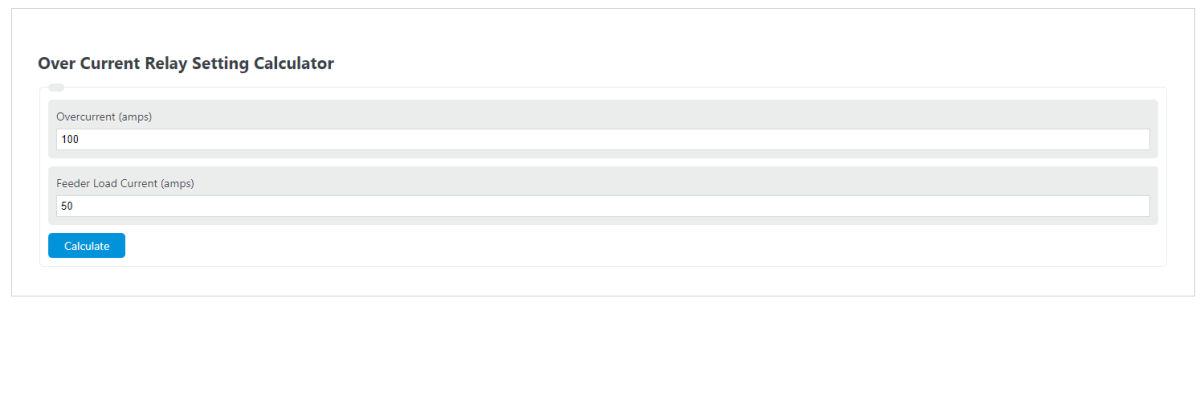Enter the overload current and the feeder load current into the calculator to determine the overcurrent relay setting.
Over Current Relay Setting Formula
The following equation is used to calculate the Over Current Relay Setting.
RS = OC / FLC *100
- Where RS is the current relay setting (%)
- OC is the over current (amps)
- FLC is the feeder load current (amps)
To calculate the over current relay setting, divide the overcurrent by the feeder load current, then multiply by 100.
What is an Over Current Relay Setting?
Definition:
An over current relay setting is a ratio of the overcurrent to the load current, expressed as a percentage.
How to Calculate Over Current Relay Setting?
Example Problem:
The following example outlines the steps and information needed to calculate Over Current Relay Setting.
First, determine the overcurrent. In this example, the overcurrent is measured as 200 amps.
Next, determine the feeder load current. For this problem, the feeder load current is 100 amps.
Finally, calculate the over current relay setting using the formula above:
RS = OC / FLC *100
RS = 200 / 100 *100
RS = 200%
FAQ
What is the purpose of an overcurrent relay in an electrical system?
An overcurrent relay is a protective device used in electrical systems to detect and interrupt excessive current flows, thereby protecting the system from damage due to overloads or short circuits. It operates by measuring the current and triggering a trip mechanism when the current exceeds a predetermined level.
How does the setting of an overcurrent relay affect system protection?
The setting of an overcurrent relay determines the level of current at which the relay will operate to interrupt the circuit. A properly set relay ensures optimal protection by responding accurately to overcurrent conditions without unnecessary interruptions for normal or slightly elevated currents. Incorrect settings can either lead to frequent false trips or fail to protect the system during actual overcurrent events.
Can overcurrent relays protect against both overload and short-circuit conditions?
Yes, overcurrent relays can protect against both overload and short-circuit conditions. Overload protection is provided by setting the relay to trip at currents slightly above the normal operating level, allowing for safe operation under normal conditions and protection during prolonged overloads. Short-circuit protection requires the relay to trip instantaneously at much higher current levels to protect the system from the severe effects of short circuits.
